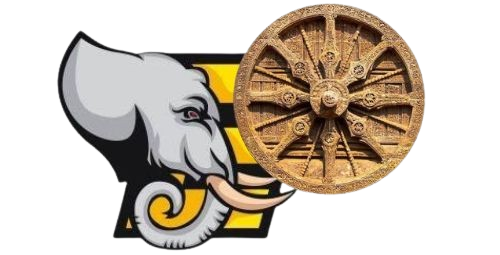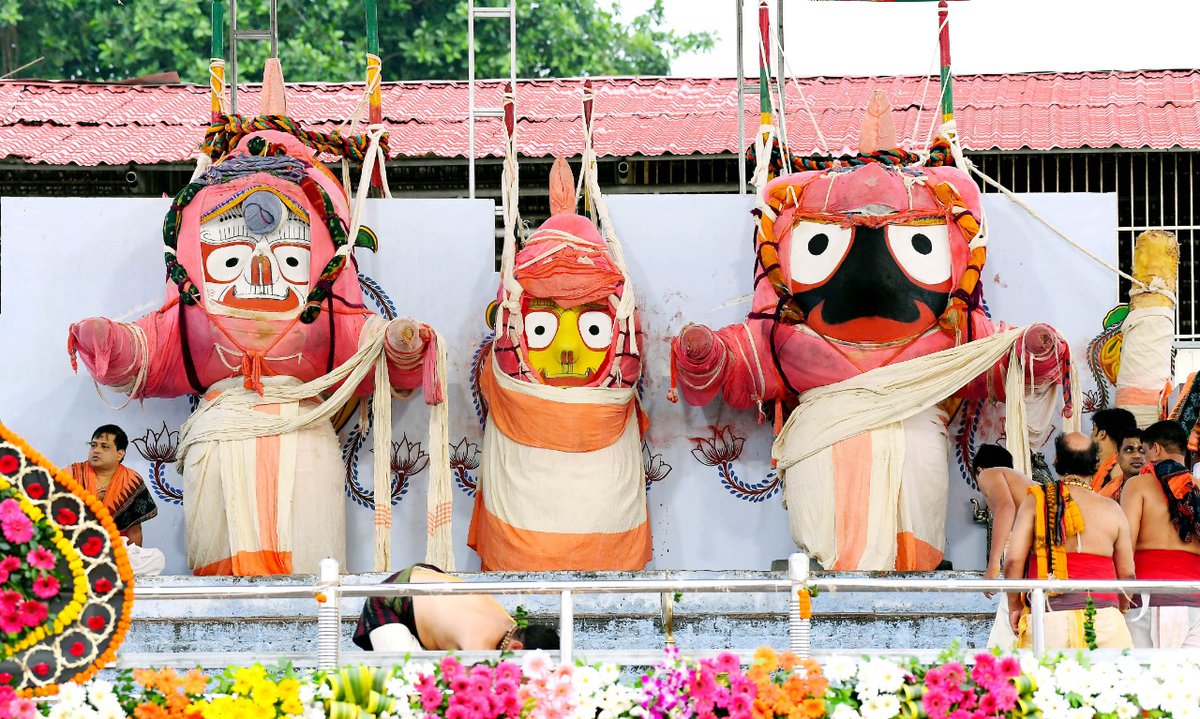The Jagannath Temple of Puri, located on the eastern coast of Odisha, is not only one of the most revered pilgrimage destinations in India but also a marvel of ancient architecture and mysticism. Among its many astonishing features, one phenomenon stands out and has intrigued devotees, scientists, and scholars for centuries: the main flag (Patitapabana Bana) atop the temple always flies in the direction opposite to the wind.
This seemingly inexplicable event, visible every day, defies the laws of physics and aerodynamics. The flag’s behavior is not only considered a divine mystery but is also deeply woven into the religious, architectural, and spiritual fabric of the Jagannath culture. In this article, we explore the origins, historical context, and detailed explanation—both spiritual and scientific—of this incredible phenomenon.
The Significance of the Flag – The Patitapabana Bana
The flag that flutters atop the Sri Mandira (Jagannath Temple) is not just a symbol of faith—it is a living representation of Lord Jagannath himself. Known as the Patitapabana Bana (meaning “Savior of the Fallen”), it is hoisted daily on the top of the temple’s towering 214-foot (65-meter) shikhara (dome).
The flag is triangular and usually dyed in deep saffron or red, inscribed with sacred symbols like the chakra (wheel) and conch, and is changed every day in a daring ritual where a temple priest climbs the massive structure barefoot, without any mechanical support.
This flag is considered so divine that a mere glimpse of it is believed to wash away sins and bring immense spiritual merit. Pilgrims who fail to enter the sanctum often bow to the flag from outside, believing that Lord Jagannath’s grace flows through it.
The Phenomenon: Flying Against the Wind
Despite the strong sea breeze coming in from the Bay of Bengal, the Patitapabana flag astonishingly flutters in the opposite direction—defying natural wind flow. Even on days when the wind is steady and strong, the flag appears to move contrary to its expected trajectory.
This phenomenon is visibly consistent, observable throughout the day, and has no known artificial intervention or modern explanation within the structure that manipulates wind currents.
Spiritual Interpretations and Beliefs
To millions of devotees, this miracle is not meant to be dissected through science but understood through divine wisdom. In the spiritual lexicon of Jagannath Bhakti, the backward fluttering of the flag is a symbol of the Lord’s transcendence—His power over the material world and the laws that govern it.
Here are a few commonly held beliefs among followers and priests:
1. Lord Jagannath’s Will Overrules Nature
As the supreme god of the universe, Lord Jagannath is believed to control all elements—wind, water, fire, earth, and space. The flag flying against the wind is a daily miracle that reaffirms His cosmic authority.
2. Sign of the Lord’s Presence
It is believed that as long as the flag flutters, Lord Jagannath resides in the temple. If the flag ever stops moving or falls (an extremely rare event), it is considered inauspicious, and immediate rituals are conducted to restore spiritual balance.
3. Representation of Dharma’s Power
Some spiritual scholars interpret the backward movement of the flag as a metaphor for righteousness moving against the current of worldly temptations. It reminds devotees to stay devoted to dharma even when facing resistance.
Historical Origins of the Flag Tradition
The tradition of hoisting the Patitapabana flag dates back to the 12th century, when the present-day Jagannath Temple was constructed by King Anantavarman Chodaganga Deva of the Eastern Ganga Dynasty. From the inception of the temple, the flag ritual was embedded as a mandatory daily offering, just like food (Mahaprasad) and rituals like Sandhya Aarti.
The ancient texts and palm leaf manuscripts associated with the temple describe the flag as a ‘mobile darshan’ for those unable to enter the sanctum. It was hoisted every day with Vedic mantras, accompanied by prayers to Lord Vishnu.
In fact, many scholars argue that the flag’s origin is linked with the tribal roots of Jagannath worship, where fabric and totems were often raised atop wooden poles as signs of divine presence.
Architectural Alignment and Scientific Hypotheses
While spiritualists view the flag’s behavior as miraculous, scientists and researchers have attempted to explore it from a structural and aerodynamic perspective. While no definitive explanation exists, some hypotheses have been proposed:
1. Air Pressure and Temple Design
The design of the temple is such that it creates a micro-vacuum zone around the dome. The upward draft from heated air currents inside the temple and cooler sea breeze outside may create an unusual low-pressure system, forcing the flag to move in reverse.
2. Angle of Placement
Some suggest that the angle at which the flag is fixed could be responsible. Instead of being directly aligned with the dome, it may be set at a reverse trajectory, forcing the fabric to billow backward regardless of wind flow.
3. Altitude Wind Reversal
Wind speed and direction vary significantly at different altitudes. There might be a higher altitude countercurrent at the temple’s pinnacle level which overrides the surface breeze. However, this theory remains largely unverified.
Despite these theories, none have been able to replicate or conclusively explain the behavior of the flag—leaving it firmly in the realm of mystery.
The Ritual of Flag Changing: A Feat of Devotion
Every day before sunset, a priest climbs the temple dome without safety gear, ascending barefoot to a height of over 200 feet. With the wind blowing fiercely, he replaces the flag with a fresh one while chanting mantras.
This act is not just ritualistic—it is a test of physical endurance, faith, and skill, passed down through generations of a select group of servitors known as the Garuda Sevaks. The community believes that as long as the ritual is performed with devotion, no mishap will ever occur.
The courage and devotion of these priests symbolize the living spirit of service (seva) that sustains the temple’s daily miracles.
Other Mysteries That Complement the Flag Phenomenon
The flag flying against the wind is only one among several inexplicable phenomena associated with the Jagannath Temple:
- The temple’s shadow never falls on the ground at any time of the day.
- The Sudarshan Chakra atop the temple appears to face you from any direction.
- The direction of the sea breeze and temple winds reverse at specific times of the day.
- No sound of waves can be heard once you enter the main temple premises.
These features are not mere coincidences but intricate parts of a sacred energy field that devotees believe is charged by centuries of prayer, rituals, and divine presence.
Conclusion: A Living Miracle Beyond Science
The phenomenon of the Patitapabana flag flying against the wind is a daily reminder that not everything sacred must be explained. Whether viewed through the lens of faith or science, it continues to inspire awe, wonder, and reverence.
In a world dominated by logic and materialism, this divine flag stands high—defying the wind, defying explanation, and reaffirming the eternal power of belief. It is not merely cloth tied to a pole, but a living symbol of Jagannath’s omnipresence, His protection, and His daily reassurance to millions that He watches over them—even when unseen.
So, when you stand before the Jagannath Temple and look up at that fluttering miracle, know that you are witnessing not just an architectural anomaly—but a divine dance of the eternal Lord against the winds of time.




